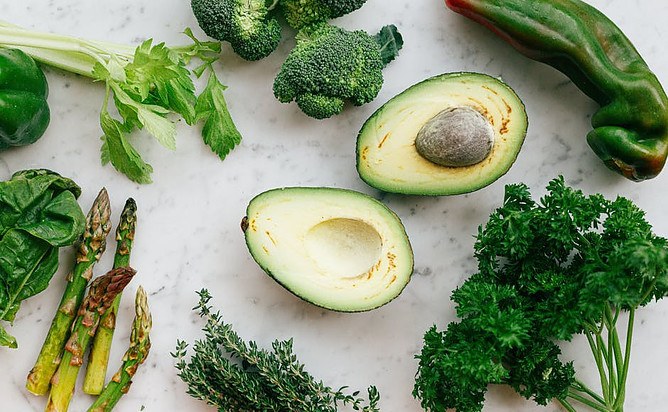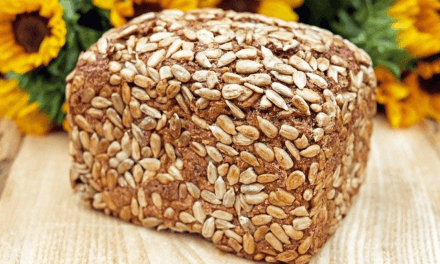In this article, we are going to address confusion about green vegetable eating for people with diabetes. Particularly, the question Can Green Vegetables Cause Type 2 Diabetes. And, by avoiding green vegetables can you prevent type 2 diabetes? And many more questions related to green vegetable eating and diabetes, which is the basis of popular diabetes management program called ‘Diabetes Freedom Program’.
However, before jumping into the Diabetes Freedom Program Review, let’s cover some background about diabetes, to understand our criticism of Diabetes Freedom Program better.
Let’s start rolling with the understanding of the impact of diabetes.
Over 10% of the American population or 34.2 million people were estimated to have diabetes as of 2018. Of the 34.2 million, 26.8 million people were diagnosed and 7.3million largely undiagnosed.
In 2015, 88 million American adults were pre-diabetic with at least 1.5 million increase annually. Diabetes is a slowly growing pandemic, and death usually results in complications associated with diabetes such as cardiovascular problems, kidney damage, skin problems, etc.
What is Diabetes?
Diabetes is a metabolic disease that occurs when the amount of glucose or blood sugar gets too high. The food we eat provides glucose which is the body’s main source of energy.
Usually, after eating a meal, the blood glucose (sugar) level is high as the food is been broken down and digested. With a sense of the increase of blood glucose level, insulin acts to signal the cells to utilize glucose for energy.
Insulin is the key hormone produced by the pancreas, which signals the muscle and fat cells instructing to take-up glucose and uses it for producing energy. It also signals the liver to take up insulin and store as glycogen.
In diabetes, the pancreas is either unable to produce insulin (type 1 diabetes), or the body’s cells cannot use the insulin produced to establish a glycemic balance in the body (type 2 diabetes). In the latter case, the body’s cells cannot use the insulin present due to a form of resistance.
Types of Diabetes
There are 3 major types of Diabetes.
Type 1 Diabetes- Juvenile Diabetes
Type 1 diabetes occurs in 5% of the population and usually affect children, hence the name juvenile.
Type 1 diabetes is a chronic auto-immune condition in which the insulin-making cells of the pancreas (beta cells) are totally destroyed by the immune system. This results in a high level of blood glucose (sugar) level as insulin is not available to transport the glucose to the cells.
Type 1 Diabetes has no proven cure and can only be managed by daily insulin shots. Proper adjustment will also have to be made in lifestyle and diet.
If poorly controlled, type 1 diabetes can lead to numerous other complications such as retinopathy, kidney damage, skin problems, pregnancy problem, cardiovascular damage…etc.
Gestational Diabetes- Diabetes During Pregnancy
Gestational Diabetes is a sub-type of diabetes that occurs during pregnancy, causing the mother’s blood sugar to spike. This can affect the health of both the mother foetus. It can be easily controlled by following medical advice, exercising and eating healthy.
Blood sugar usually returns to normal after delivery, but there is a higher risk of having type 2 diabetes later in life, so blood sugar should be closely monitored for any changes.
Type 2 Diabetes- Adult-onset Diabetes
Type 2 Diabetes, as noted earlier, is the most common form of diabetes, as it makes up 95% of all diabetes cases.
Type 2 diabetes is a long-term or a chronic medical condition which affects the way your body metabolizes glucose — one of the most important sources of fuel for our bodies.
Type 2 diabetes results either by resisting the effects of insulin, that is the signaling pathway between insulin and body cells becomes faulty, or the insulin produced by the pancreas is not enough to maintain the normal glucose levels required for energy.
Although type 2 diabetes is known as adult-onset diabetes, as it usually occurs in adults aged 45 and above, it is now frequently been diagnosed more in children and young adults due to the rise in childhood obesity.
This condition also can be managed by following medical advice, eating healthy, exercising right and losing weight, as there is no known definite cure for it either.
Having diabetes should not mean avoiding delicious food though. With fruits and vegetables, you can hardly go wrong as you can be assured of so many nutrients that can help to make lifestyle and diet adjustments not only easier but also delicious.
Listed below are some of the vegetables you should include in your diet.
Which Vegetables are Good for Diabetes?
Let’s find out which vegetables are healthy for people with diabetes and why.
Zucchini
Zucchini is high in carotenoid compounds and helps in protecting the health of the heart.

Spinach
This a vegetable low in calories’ and high in minerals and vitamins. It also contains 20 different nutrients, including dietary fiber, calcium and protein.
Tomato
Not only are tomatoes a good source of vitamin C and E, they also contain a high level of anti-oxidants which protects the body by reducing lipid peroxidation. The anti-oxidants properties help to protect the kidney and bloodstream – the two major areas affected by diabetes.
-
Cucumber
One of the complications of diabetes is skin infections. Cucumbers are not only good for a spa day, when consumed, it has healing properties that can help fight skin infections, it also helps in reducing blood pressure and reduce the risk of kidney stones.
Red onions
Red onion, the most common part of most food recipes, it also contains anti-cancer compounds including ‘quercetin’ and ‘anthocyanin’.
Consuming red onions can greatly lower the risk of many diseases, including ovarian cancer, breast cancer and diabetes.
Broccoli
This is one of the healthiest food that can be included in your diabetic diet.
Broccoli contains a compound called ‘sulforaphane’ which results in the production of enzymes and helps to protect blood vessels reducing the number of damaged cells.
Carrot
Contains vitamin A, which helps with immunity and healthy eyes, carrots are also cheap, healthy snack that helps to curb appetite.
In managing type 2 Diabetes, the question often comes up with what should be included in the diet to make it wholesome.

Addition of fresh fruits and vegetables to your diet will help to lower the blood sugar, provide necessary nutrients and curb unhealthy appetite, provide powerful antioxidants that can help to fight diseases naturally.
There are so many vegetables, now we know which one is best for a diabetic diet. But, what about for type 2 diabetes? And, which vegetables one should be avoided with type 2 diabetes?
Check the list below to know more.
What Vegetables Can a Type 2 Diabetic Eat?
Type 2 Diabetes can be managed by eating healthy and exercises. The best type of vegetables for a type 2 diabetic, are vegetables to that are; low-GI, high-nitrate, protein-rich and fiber-rich vegetables.
Tip: Here are the best protein drinks for diabetics.
Let’s look into each type now.
Rich in fiber
Fiber is readily found in vegetables and is essential in a glucose-controlled diet as it helps with weight loss and reduce the level of ‘bad cholesterol’ in the body.
Example of vegetables high in fibers includes: artichoke, broccoli, beets, carrots, avocados.
Low on the glycemic index (GI) scale
The GI scale, shows how fast glucose is absorbed from food, it should be low so as not to result in blood sugar spikes.
Examples of vegetables low on the GI scale include: artichokes, asparagus, green beans, lettuce, eggplants, cauliflower, pepper, celery.
For example, boiled potatoes should be avoided as it has a high GI of 78, while boiled carrot has a GI of 41.
High in nitrate
Nitrate-rich foods help to lower blood pressure and improve circulatory health. Vegetables rich in nitrate include: beet, rhubarb, lettuce, arugula, celery.
High in protein
Protein-rich food helps to make you feel ‘fuller’ and curb your appetite.
Vegetables high in protein include: spinach, asparagus, broccoli, cauliflower, mustard greens.
Daily protein recommendation should be checked in with your doctor or diabetition to make sure you optimize your nutrition intake based on personal health requirements.

Which Vegetable Should be Avoided in Diabetes?
As healthy and wholesome as vegetables are, some of them are to be avoided to prevent the blood sugar spikes that result from consuming them.
They include:
Potatoes
Either boiled or fried, potatoes contain about 37grams of carbs and can spike your blood sugar.
If eating potatoes cannot be totally avoided, opt for sweet potatoes, but it should be consumed in small quantities only.
Frozen green peas
On the GI scale, frozen green peas scores a whopping 39 and should be avoided.
- Vegetables such as Iceberg lettuce are not really great because they are low in nutrients.
- Canned vegetables and vegetables cooked with lots of added butter and cheese should be avoided.
Are Green Vegetables Bad for Diabetes?
Green leafy vegetables are one of the healthiest food on the planet as they are low in calories’ and provide much-needed nutrients to the body. They are also a good source of vitamins and minerals, phytonutrients, antioxidants and anti-inflammatory properties.
Vegetables such as spinach are especially diabetic-friendly as it is low on the GI scale, highly nutritious and high in fiber.
Based on science, Green Vegetables are the best thing that can be included in a diabetic diet.
But, if so, why people believe green vegetables are bad for diabetics?
Which Green Vegetables Can Cause Diabetes?
No known green vegetable has been implicated as the causes of diabetes as diabetes, especially Type 2 Diabetes result due to insulin resistance. This means that the insulin is unable to take up the blood sugar for processing leading to an increase in the blood, or the pancreas does not produce enough insulin to perform its function.
Green vegetables are very healthy as they do not cause a spike in blood glucose levels which can lead to Diabetes unlike highly processed carbohydrates, red and processed meat, sweet-sugary drinks, saturated and trans fat.
Green vegetables are rather advised to be included in a diabetes diet.
Tip: Glucerna drinks, shakes and bars can be very useful for people with diabetes.
What Does Research Say About Green Vegetables?
Diabetes cannot be cured (at least in most cases), but type 2 diabetes can be prevented by including vegetables in the diet.
Several studies have shown that a diet rich in fruits and vegetables may help in reducing the risk of developing type 2 diabetes, as well as other disease conditions.
However, a diet should not only be high in fruits and vegetables, but it should also be properly balanced. It should contain minimal (if not zero) processed food, chips, fries, fizzy drinks, high calories’ food such as starchy food and grains to get all the benefits.

Researchers also estimate that for every 66grams per day increase in total fruit and vegetable consumption, there is at least 25% lower risk of developing type 2 diabetes.
In addition, colorful vegetables also contain vital nutrients such as vitamin C and carotenoids, which helps in protecting the health of the heart.
What is “Warning: Green Veggie Causing Diabetes Type 2 In Millions” or the Diabetes Freedom Program?
Green vegetables have always been the go-to diet for a diabetic, but is there a particular vegetable that can cause diabetes?.
Although, no research supports this, the Diabetes Freedom program claims the green leafy vegetable Kale, which is a major part of most people’s daily diet causes diabetes. The Diabetes freedom program claims that there are toxins in Kale which causes diabetes.
How True are the Claims of Diabetes Freedom Program?
Several researches have shown these claims to be false as kale is considered one of the healthiest vegetables not only for a diabetic diet but also for a non- diabetic diet. Addition of kale to diet has been shown to suppress postprandial hyperglycemia. In other words, that means, kale prevents the spike in blood glucose levels that can worsen your diabetes.
Kale is one of the most nutrient-dense food in the world, loaded with vitamins A, K, C, B6 and also minerals such as manganese, calcium, copper, potassium, magnesium.
Kale has very little fat, but the fat is an omega-3 fatty acid called alpha-linolenic acid.
Kale is very high in antioxidants, these include beta-carotene and vitamin C, it also contains various flavonoids and polyphenols.
Antioxidants help to counteract oxidative damage caused by free radicals in the body.
Diabetes Freedom Program Review
For years, diabetes had been on the rise annually. Type 2 Diabetes is estimated to affect 50% of the adult American population, that is almost 120 million people!.
The risk factors for diabetes include; sedentary lifestyle, unhealthy eating, genetics, lack of exercise. These factors
are part of most people’s lifestyle, especially if you have a desk job, or a job that requires you to stay put for long hours. It is usually easier and faster to grab ‘fast food’ for a quick burst of energy, especially if you’re in a hurry as we most often times are in today’s world.
For people with diabetes, after a while, the daily prick on the finger to check for blood sugar level, becomes a hateful chore. The calorie-check, and the medical cost pile up adding a strain to your finances, and there is no end in sight, as diabetes can only be managed for life and not cured.
This has lead to people seeking other alternatives that are less pricey or that offers hopes of a cure. One of such alternative explored is the Diabetes Freedom Program.

Diabetes Freedom Program is a digital program that promises to offer natural alternatives to help people with Diabetes. This program was created by George Reilly, a former diabetic patient with the help of James Freeman, a physician.
This diabetes program offers a specific guide on food that will ‘help’ your body to naturally combat diabetes. It recommends foods containing antioxidants, phytonutrients, and anti- inflammatory properties, that help to improve your health, digestion, metabolism and also help to regulate blood sugar.
Feature of the Diabetes Freedom Program
The offers a digital manual that contains:
Nutritional plan
These include ingredients and specific diets that help in the detoxification of your body system.
Brown fat boosting blueprint
This guide also includes methods to increase the brown fat cells while decreasing the white fat cells.
Brown fat or brown adipose tissue,
is a type of body fat that is activated when a person is cold. It utilizes glucose and fat cells for heat production and helps to maintain body temperature – White fat stores fat.
Meal timing strategies
This shows you how to time your meal for your body to self-regulate or naturally combat diabetes. It also shares weight loss tips.
Pros
- The program offers natural alternatives as you don’t have to spend a dime on drugs.
- The instructions are easy to follow and instructions come with a short video .
- The program is very affordable.
- There is a 60 days money-back guarantee, in case the program does not work for you.
Cons
- It is largely based on false claims, so most people consider it as a ‘scam’ to the produces to become rich fast.
- It is only an online program and might not be accessible for people with no internet access.
- The program is not flexible as it has to be followed religiously to work.
Why Diabetes Freedom Program is a Scam?
If you’re thinking of giving the Diabetes Freedom Program a trial, then you should know the creators George Reilly and Dr James Freeman are simply fictional characters and do not exist. This scam feeds into your fear of big pharmaceutical companies withholding the cure from you.
This program which is backed by no research, offers a ‘ miracle cure’ for a condition several research has proven has no cure. That already should tell you something.
Like so many scams, this program offers you a diet that helps to reduce your type 2 diabetes. It’s not surprising that it is the similar to the diet recommended by your doctor and containing fruits and vegetables.
The price of $37 is probably the biggest part of the scam, because if you proceed to pay for it, you’ll be advised to buy an upgrade or buy some other plan to make your journey faster. This is called upselling.
If you do proceed to pay, you should clearly understand that you just paid for a piece of information, which is available for entirely free on the internet and has been included in this article for free.
But there are reviews and Facebook post thanking the authors!- with a simple search, you will come to the discovery that the reviews, as well as Facebook posts, are also very fake. They are used to draw you in, and gain your trust, because people tend to buy more of a product when they have proof from other people.
Simulation of brown fat is a very controversial science, and adults have so little of it anyway.
You can get free information on diabetes from the internet with just a click away and from your doctor. Don’t fall for these types of scams, but protect your finances.
Conclusion
Diabetes is a metabolic disease affecting both the young and the old and reaching almost pandemic level. It is caused by non-production of insulin or by insulin resistance.
Fruits and vegetables can help you to reduce the risk of diabetes and other diseases by up to 25%.
The diabetes freedom program is a scam that offers a guide on your body can help to combat diabetes by offering readily available information and repacking it for sale to unsuspecting customers.







